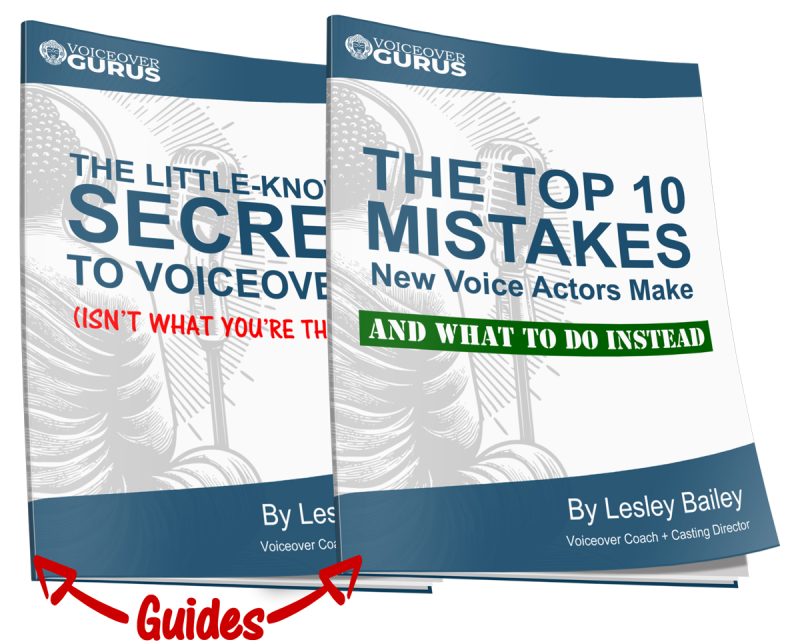I recently had the pleasure of watching the talented voiceover actress (among other things) Annie Meisels at work in her next venture . . .public speaking. Annie has been a talented actress for decades and during my busiest times as a casting director for voice over auditions she was on my call sheet for many projects. Her broad range and spot on performances brought her back to the casting offices again and again. She consistently demonstrated a clear understanding of the exact tone and style that was needed for each individual script. Layering on to her already great command of the voice has brought her to develop her skills as a public speaking coach through A Powerful Voice. The crossover skills utilized between public speaking and voiceover are worth exploring here today and can enhance the voiceover skills you might already possess.
Let’s start with the connection between your body and your voice. We have gone over this before but Annie gets wonderfully specific. Yes, the rule of thumb is to make sure that your body and facial gestures are in line with the emotional tone of the script. Annie suggests using these physical gestures as a possible “cheat” as well, when you are having trouble connecting to the emotional “truth” of the message. Let’s say you are doing a spot for McDonald’s but you’re not so hot on their food. You know through either script analysis or writer’s direction that they want you to get excited, but you don’t “feel” it. Your tool for excitement on a physical scale would be arms up in the air. This will “get you there”, or at least get you closer, than you would have otherwise. On the same note, if you’re expected to convey a laid-back, casual response to something, try a shrug of the shoulders. If the read calls for sarcasm, roll those eyes. If the direction is “friendly” simply remember to smile. You’d be shocked at how many students I catch with a serious expression on their face while reading a friendly script. When people are concentrating, it can get forgotten! Just think about the times you or someone you know was conveying a message with a particular tone and how that translated in the body. The things we do in real life should never be eliminated from your voice over performance. Don’t sterilize your read, or it won’t give birth to a booking.
We then move on to some more technical options for adding more authenticity and dynamism to your read. Take a few sentences and practice finding the “keyword(s)” or point of the sentence. Once you’ve identified that, you can begin to highlight the point with one of a few techniques:
- Slow / fast
- High / low
- Parenthesize or Emphasize a word
Take this sentence as an example:
I really love my bread-maker, but not when it’s time to clean it.
Your first choice would be to emphasize the contrasting points here through the slow/fast technique. At the risk of sounding obvious, you would speed up one half of the sentence and slow down the other half. Or vice versa, as far as order goes, depending on the message. Here, I would choose to speed up the first half, as that pace would go along sensibly with an upbeat positive tone. We are on the love part, so it makes sense. On the second half, a slow delivery would pair nicely with a dry and resigned attitude. Try it out loud for yourself, and reverse the order as well. Listen carefully and decide whether that resonates. Then whip out any book, newspaper, magazine that you have and try a couple more.
Your second choice addresses a choice of inflection, as stated here by the “high/low” phrasing. This requires a little bit of detective work first. You can only use your high and low inflections so much before it loses its power. Decide what the keywords are here and apply your choices of inflection to those words specifically – to highlight how you feel about them. In this case, I would go with the word “love” here, as if bread-maker was already the subject of conversation and in this instance you’re talking about your LOVE for it. This would be the place to use your higher inflection note. A high inflection expresses happiness and positivity. What you’re NOT happy about, however, is having to CLEAN it. Use your down inflection on the word clean to express your displeasure with that act. Done. Try it out loud. Reverse it. Decide for yourself.
Lastly, we have the emphasize/parenthesize technique. This falls in line with the detective work you just did earlier. What word or words do you want to pop? What words convey the key point of your message? Underline them, parenthesize them, put quotes around them . . .whatever you need to do to be mentally prepared to give those words a nudge when you come to them. To separate this technique from the high/low one, which also focuses on doing something only on the keywords is simple. Take those same keywords, of course, because they are your focus, and read the sentence one time just hitting those keywords with the exact same inflection choice. You will need to hyperfocus your intention a bit more here. So, hit the words LOVE and CLEAN both with a lower/down inflection. The difference is that when you used the down inflection before to convey loathing, you will now tweak intentionally to convey the opposite when you use it on the word LOVE. The intention is focusing on the fact that you truly enjoy your bread-maker, that it gives you so much pleasure. Find a way to feel THAT but by using your lower register. When we break inflection rules it is always fine as long as we are emotionally in touch with what we are expressing. Now reverse that and use only your high inflection on those two keywords. Here you will have to find a way to use your high inflection in a way that expresses displeasure on the word CLEAN. It can be done. Eventually, you will not have to get this conscious about your choices. It will come naturally. The understanding of the message will be there, and that will be your guide.
Another technique that cam certainly apply to voiceover as well as that of employing an “active” word when considering how you will perform the beginning, middle, or end of the script (or speech). This is common talk when discussing a voiceover script, as many people like to consider them all having a classic beginning, middle, and end. I don’t always believe that is the case, but I works as a “general” practice. Take the “beginning” and consider the feeling of the approach you get when reading it over in your head. Does it feel warm, playful, energized, etc? Let’s look at a few sentences now and the active words I would choose to apply to each:
Kinayzo introduces a smarter approach to organization. – I would say this is pretty informational, as it’s letting you know a new product on the market. My active word to apply as I approach this line, this beginning, would be “Introductory.” Basic, I know, but so is the sentence.
Prayma can make you feel safe, in a world full of dangers. – Here I would say it feels pretty comforting and warm. Those words work fine, or to combine them into one is would go with “reassuring.”
Pull back flap to vent . . . the point of no return. (The second sentence, for context, is “once you’ve exposed this frozen block of food to the world, you’re commited.”) It feels like the writer here was going for something very confiding and familiar, but there’s an edge of sarcasm to it. I’d go with “witty.” Hmm. Not a very active word though. How about “confiding.” To tell someone with wit how you feel about something frustrating means to trust them, to confide in them. The active word will not always be perfect, but it will make you more conscious of what you are doing, and allow you to transcend the fact that you are just reading someone else’s words off a piece of paper. But, this is half the voiceover battle anyway. Go activate.


 Hi! I’m Lesley Bailey. I’m an award-winning Casting Director, Voiceover Coach, Demo Producer, and Consultant with over 30 years “in the trenches”. I love helping voice actors bring scripts to life with authenticity and confidence.
Hi! I’m Lesley Bailey. I’m an award-winning Casting Director, Voiceover Coach, Demo Producer, and Consultant with over 30 years “in the trenches”. I love helping voice actors bring scripts to life with authenticity and confidence.